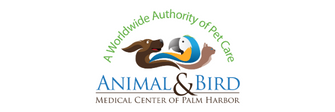Surgical Procedures
Surgery on eyes, ears, and other soft tissue areas.
At Animal and Bird Medical Center of Palm Harbor, our veterinarians have experience performing a number of surgeries, including:
Ovariohysterectomy (Spay)
Applies to: Dogs, Cats, Rabbits, Guinea pigs, Sugar Gliders
The procedure that will be performed includes ovariohysterectomy, the surgical removal of the uterus and ovaries. This procedure is performed under general anesthesia. Most primary care veterinarians recommend performing this procedure at approximately six months of age, but it can be performed on dogs of any age. They may be elective, or a treatment for a disease process.
The following are reasons to consider having your pet spayed:
- Vastly decreased chance for the development of mammary (breast) cancer
- 200 times less likely if an ovariohysterectomy is performed before the first estrus (heat cycle)
- Eliminates the chance of developing a pyometra (infection of the uterus)
- Eradicates unwanted estrous behavior and associated bleeding
- Eliminates unwanted pregnancies and risks of dystocia (difficult birth)
Neuter
Applies to: Dogs, Cats, Rabbits, Guinea Pigs, and Sugar Gliders
Castration (Neutering) in small animal patients may be performed on a routine basis for population control and behavior modification or may be performed for disease control or treatment. Intact (non-castrated) pets that reproduce in an unregulated manner may lead to companion animal overpopulation. Overpopulation is a huge problem in most municipalities across the country, recognized by crowded humane animal shelters and rescue organizations.
Specific recommendations for castration-associated disease control or treatment include patients suffering from:
- Cryptorchidism (one or two undescended testicles)
- Testicular hypoplasia/atrophy
- Orchitis/epididymitis (infection)
- Severe testicular trauma
- Testicular/epididymal neoplasia (cancer)
- Testicular torsion
- Perineal hernia
- Underlying urinary tract disease (urethral calculi)
- Prostatic diseases
Declaw
Removal/amputation of the claws to make them less harmful.
The decision to declaw a cat should be made by the owners in consultation with their veterinarian. Declawing of domestic cats should be considered only after attempts have been made to prevent the cat from using its claws destructively or when its clawing presents an above-normal health risk for its owner(s).
- Declawed cats should be housed indoors and allowed outside only under direct supervision.
Lacerations / Injury
A laceration is a deep cut or tear in skin or flesh.
There are a few treatment guidelines that are generally followed with this type of wound:
- Preparation of the skin for wound treatment
- Cleaning and debridement of the wound Irrigation of the wound, if needed, before closure or bandage
- Wound closure
- Bandaging
If your pet’s injury is more serious than a Simple Laceration injury, surgery may be required.
Simple Clean Lacerations
- Most lacerations will be treated under some degree of sedation. If the laceration is simple and clean, then the area is clipped and cleaned surgically for closure.
- The laceration will most likely be closed using surgical glue, sutures, or staples.
- Oral antibiotics and oral pain medication will most likely be prescribed to assist in the healing process
Complex Dirty Lacerations
- These wounds will require general anesthesia and surgery to repair.
- Under sedation, and after the area is surgically prepared, the edges of the laceration will be trimmed and any dead tissue will be removed.
- The wound will be irrigated with an antimicrobial solution and the veterinarian will determine whether to close the wound for healing or leave it open for healing.
- Not all lacerations can be sutured or stapled; some will have to heal from the inside out. Wounds that are left open during the healing process generally require repeated bandaging or a drain is put in place to allow a pathway for infection to drain out of the tissues.
- Management of bandage changes and drains can be done at home if the dog owner is trained properly, or they can be managed at the hospital on repeat visits to the technician in charge of your case.
- Oral antibiotics and oral pain medication will most likely be prescribed to assist in the healing process.
Additional Animal Surgery Procedures:
| Orthopedic Surgery | Fiberoptic Surgery | Dental and Oral Surgery |
|
For orthopedic surgery, we have a complete orthopedic suite with all of the same Hall’s hand pieces that are used in human hospitals.
|
|
|
| Ophthalmic Surgery (Eye Surgery) |
Avian Surgery | Ferret Surgery |
|
|
|
| Rabbit Surgery | ||
|
Following surgery, your pet will be kept comfortable and monitored while the effects of anesthesia wear off. Wanting to rest for the remainder of the day is normal, but if you’re concerned about your pet’s post-op behavior, please don’t hesitate to call us at (727) 784-0558.

